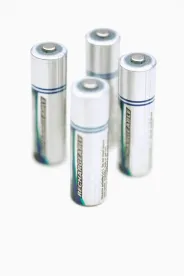Batteries play a fundamental role in energy storage, and currently nearly 99 million lead acid batteries are manufactured each year. This past Wednesday, U.S. Environmental Protection Agency (EPA) issued a proposed rule in the Federal Register relating to air emissions controls for lead acid battery manufacturers. Highlights of the proposed rule are more stringent lead emission limits for grid casting, paste mixing, and lead reclamation operations under both the National Emissions Standards for Hazardous Air Pollutants (NESHAP) (for new and existing sources) and new New Source Performance Standards (NSPS) for lead acid battery facilities that begin construction, reconstruction, or modification after February 23, 2022.
Specifically, EPA proposes:
-
A tougher 0.1 milligrams per dry standard cubic meter (mg/dscm) for paste mixing operations at large facilities (defined as facilities with the capacity to process an amount equal to or greater than 150 tons of lead in one day);
-
A more stringent 0.04 mg/dscm limitation for lead from grid casting operations (down from 0.4 mg/dscm); and
-
A more stringent 0.45 mg/dscm limitation for lead from lead reclamation facilities (down from 4.5 mg/dscm).
Additionally, EPA’s proposal contemplates:
-
“Performance testing once every 5 years to demonstrate compliance;
-
Work practices to minimize fugitive lead dust;
-
Increased inspection frequency of fabric filters;
-
Bag leak detection systems for facilities above a certain size;
-
Clarification of activities that re considered to be lead reclamation activities;
-
Electronic reporting of performance test results and semiannual compliance reports; and
-
The removal of exemptions for periods of start-up, shut down, and malfunctions.”
This proposal results from EPA’s periodic reviews of its Clean Air Act NSPS and air toxics standards. Even though EPA’s latest rule found that only one of the country’s 40 lead battery plants had violated the lead National Ambient Air Quality Standards, EPA also found that control techniques have advanced enough since the pertinent performance standards and rules adopted in 1982 and 2007, respectively, that updates were necessary.
EPA will take public comment on the proposed rule until April 25. Please reach out to any member of the Firm’s environmental team if you have questions about the Clean Air Act generally or this proposed rule specifically.



 />i
/>i

